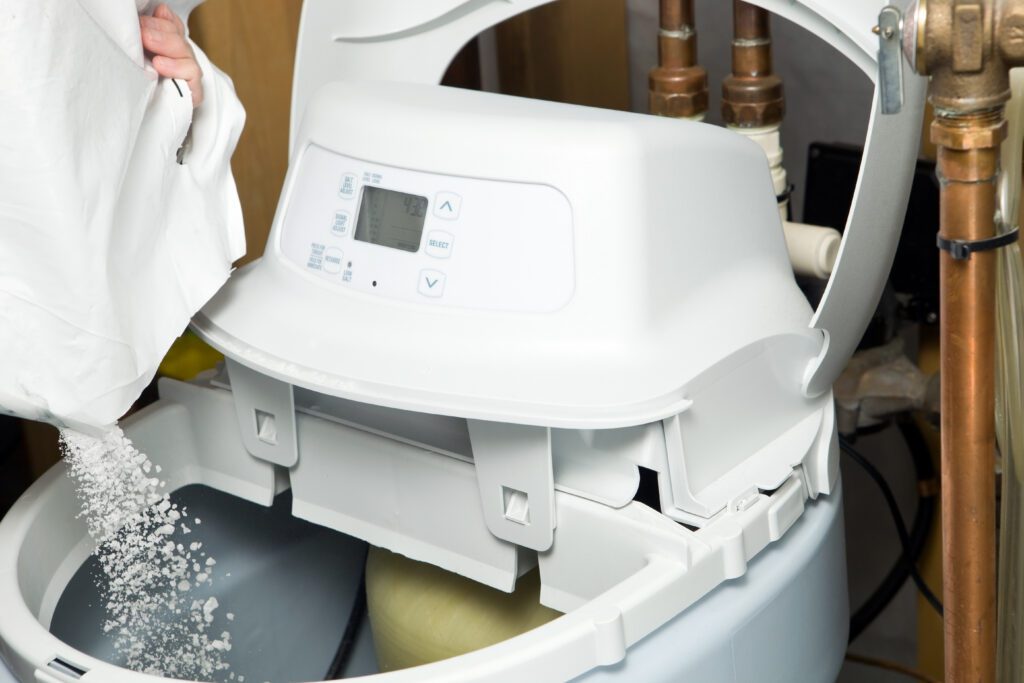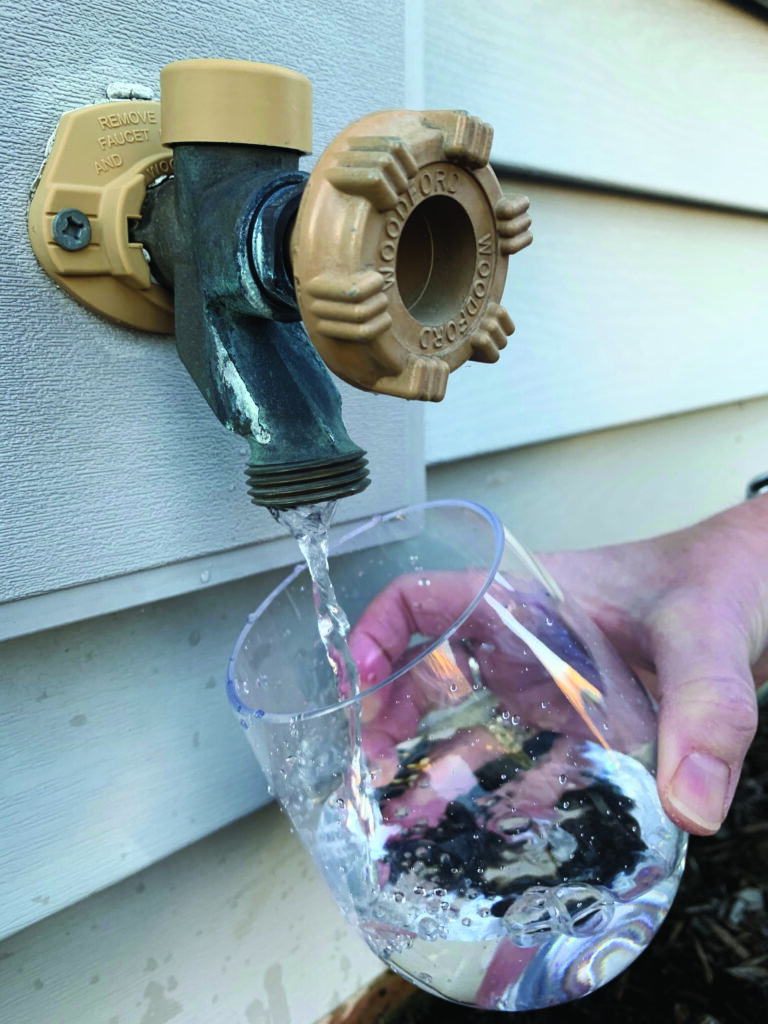Water softeners remove minerals from water that can lead to scale buildup in appliances and plumbing fixtures. While softeners provide benefits for home water quality, the downside of water softeners is that the salt they use is an environmental contaminant. All salt used by a softener passes through the sewer system and into downstream freshwater bodies, where it can harm fish and other wildlife. You can protect freshwater by minimizing your water softener salt use, which you can do by increasing your softener’s efficiency, softening less water, or both. Here are some actions you can take to save on salt and protect our freshwater systems.

Making your softener more efficient
The more efficiently a water softener operates, the less salt it uses. We recommend a minimum softening efficiency of 4,000 grains per pound, meaning the softener can remove 4,000 grains of hardness per pound of salt.
- Evaluate your current softener’s efficiency: Factors like age and softener programming affect softening efficiency. Take our online self-screen to see if your softener is due for replacement or could be optimized to achieve a higher efficiency.
- What to look for when buying a new softener: When buying a new softener, review its features to make sure it can achieve an efficiency of 4,000 grains per pound (or higher). Additionally, ask your installer to program the softener to its lowest salt dosage and to a hardness setting that matches your home’s source water hardness.
Softening less water
Soft water isn’t necessary in all situations, and the level of softening appropriate for your home comes down to your personal preference. Reducing the water you soften will proportionally reduce your salt use. Here are some actions you can take to reduce your soft water use:

- Test your water to find out what’s softened: The first step in identifying ways to reduce your soft water is to determine what water is softened in your home. You can use hardness test strips to test different supplies of water in your home.
- Disconnect outdoor water from the softener: Outdoor spigots, or hose bibbs, do not need softened water. If your hose bibb supplies softened water, have a plumber disconnect it from the softener.
- Add a blending valve to your softener: Blending valves are simple, inexpensive plumbing devices that can be added onto new or existing softeners to regulate the level of hardness in the water in the home. Blending valve devices allow a low to moderate amount of hardness in your water and will reduce the volume of water you soften, reducing your salt use.
- Soften only hot water: Scale buildup from water hardness happens more easily in hot water than in cold water. Connecting only hot water to the water softener will protect your water heater and use significantly less salt than softening cold water as well. However, keep in mind that you may notice more hardness and scale buildup in your water with this option.
You have many options to reduce your home salt use in a way that fits your preferences and budget. Learn more on our Chloride for Residents page.
Written by Emily Jones, pollution prevention specialist






